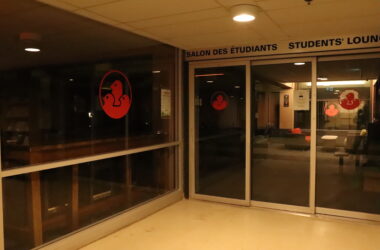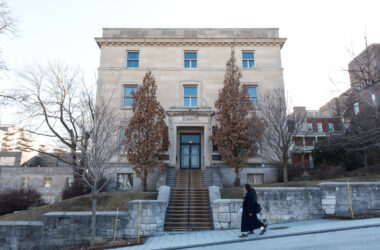The Students’ Society Council defeated a proposed referendum question at their meeting on Thursday that would have asked students to establish an Arts and Sciences representative on Council.
The issue was later revisited by SSMU President Zach Newburgh allowing the question to be reconsidered as a plebiscite, a consultative instrument that provides non-binding results.
The motion was proposed by Science Representatives Shen Chen and Lauren Hudak, Arts Representative Zach Margolis, and Clubs and Services Representative Maggie Knight, all of whom are Arts and Science students.
“Arts and Science has been around for five years now and the constitution at SSMU has not changed since the program started,” Margolis said. “A lot of other faculties and schools all have seats on SSMU. It just seems like the right thing to do.”
The inter-faculty Arts and Science program has approximately 580 students. It is part of both the Faculty of Arts and the Faculty of Science, but it faces unique academic limitations and specific course requirements.
“It’s harder for [Arts or Science councillors] to represent the needs that we have when they don’t understand the course requirements and the different course restraints that we have,” said Hudak.
Councillors who opposed the referendum question cited lack of consultation and claimed that the reasons given were not valid. Ultimately, they concluded that the question was not ready for the student body.
“We questioned if adequate research was done on the question, if alternatives were considered,” said Eli Freedman, Management representative to Council. “We thought that problem should be worked out before we consider a Council position for them.”
The Arts and Science Integrative Council conducted a survey to determine if the position in council was supported by students in the program. According to Arts Representative Todd Plummer, the results of the survey did not show an actual need for representation on Council but rather that Arts and Science students do not know who their representatives are.
“They have this assumption that an Arts and Science student is not free to come to me if they want to bring a motion to SSMU Council and that’s not the case,” said Plummer.
An additional concern that arose at Council was the fact that currently Arts and Science students are eligible to run for both Arts and Science representative. It is now unclear what would happen if a special position was designated for an Arts and Science representative and whether or not they would still be eligible to be Arts or Science representatives.
“Each faculty decides in their own way who can run for their [representatives], and once this motion is passed, I fully expect different faculty associations to change their policy.”
Hudak and Margolis explained that the defeat of the proposed referendum question at Council was completely unexpected. They hope to alleviate concerns by bringing forward resolutions at both Arts and Science Undergraduate Society Councils.
“Maybe we should have been more clear in terms of what we were trying to say. They might have taken it as if representatives of the Faculty of Arts or Science weren’t doing a good job and that is not our intention at all,” Hudak said.
Knight, one of the councillors who proposed the question, stressed that the interfaculty program has a uniquely interdisciplinary perspective, which requires that they have their own council representative .
“It’s just basically updating the SSMU constitution to effectively address this inter-faculty degree,” she said.
According to the councillors who proposed the questions, the completely different atmosphere among the Arts and the Sciences makes it difficult for them to represent their respective constituencies. However, these reasons were not enough to convince the rest of council to have a referendum question.
“No one has been able to give me a single good reason as to why Arts and Science students need a representative on SSMU council,” said Plummer. “The problems that they have addressed are academic problems which are more in the view of faculty associations.”








